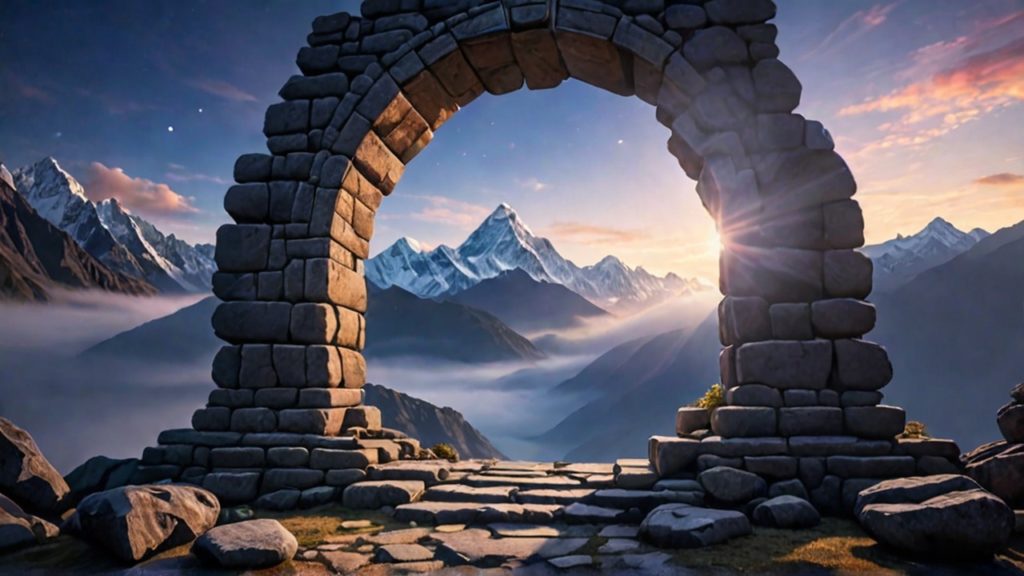The Ancient City of Shambhala in the Himalayas

The legend of Shambhala has captivated the imaginations of scholars, mystics, and explorers for centuries. A mythical kingdom said to be hidden somewhere deep within the Himalayas, Shambhala has been described in ancient texts as a land of peace, wisdom, and enlightenment. While its existence remains unproven, the legend of Shambhala has influenced both Eastern and Western spiritual traditions, inspiring countless quests for the fabled city. This article explores the origins, cultural significance, and modern interpretations of Shambhala, shedding light on why this mystical kingdom continues to hold such fascination.
Origins and Ancient Texts
The concept of Shambhala originates in Hindu and Buddhist traditions, particularly within Tibetan Buddhism. The earliest references to this mystical land are found in the Hindu Puranas, where it is described as the birthplace of Kalki, the prophesied future avatar of Vishnu. However, the most detailed and enduring descriptions of Shambhala appear in the Kalachakra Tantra, an esoteric Buddhist text that dates back to at least the 10th century CE.
According to the Kalachakra teachings, Shambhala is a pure land hidden within the Himalayas, inaccessible to those who are not spiritually prepared. The texts describe Shambhala as a kingdom ruled by a succession of enlightened kings who preserve the highest teachings of Buddhism. It is said that when the world falls into chaos and moral decay, a great king, the 25th Kalki ruler, will emerge from Shambhala to vanquish ignorance and restore harmony to the world.
Geographical Speculation
Despite being largely regarded as a mythical place, many explorers and scholars have speculated about the possible physical location of Shambhala. Some believe that Shambhala could be an actual hidden valley in the Himalayas, protected by natural barriers and spiritual forces. Others have associated it with real-world locations such as the Changthang region of Tibet, the Gobi Desert, or even parts of Mongolia and Siberia.
Notable explorers like Nicholas Roerich, a Russian mystic and painter, undertook expeditions in the early 20th century in search of Shambhala, believing it to be a real place of great spiritual energy. Similarly, the Nazi expedition to Tibet led by Heinrich Himmler sought the mythical kingdom as part of their quest for Aryan origins and hidden esoteric knowledge.
Symbolism and Spiritual Significance
Shambhala is more than just a physical location; it is a powerful symbol of spiritual enlightenment. In Buddhist philosophy, it represents the ideal state of human consciousness, a realm where wisdom, compassion, and virtue reign supreme. The journey to Shambhala is often seen as an allegory for the inner journey towards enlightenment, requiring the seeker to transcend ignorance and worldly attachments.
Tibetan Buddhist masters, such as the Dalai Lamas, have frequently referenced Shambhala as a metaphorical paradise. The teachings suggest that while Shambhala may not exist as a tangible place, its qualities can be cultivated within individuals and societies that embrace the principles of peace and enlightenment.
Shambhala in Western Mysticism and Popular Culture
The idea of a hidden utopia has resonated with many Western spiritual seekers. In the 19th and 20th centuries, Theosophists such as Helena Blavatsky and Alice Bailey incorporated the concept of Shambhala into their esoteric teachings, linking it to the Great White Brotherhood, a group of ascended spiritual masters guiding humanity from a hidden sanctuary.
Shambhala has also been linked to the legend of Agartha, another mythical underground kingdom said to house advanced beings. These concepts have fueled numerous conspiracy theories and alternative history narratives, suggesting that Shambhala may hold secrets of lost civilizations, hidden wisdom, or even extraterrestrial contact.
Popular culture has embraced the myth of Shambhala in literature, films, and video games. Notable examples include James Hilton’s novel Lost Horizon, which introduces the concept of Shangri-La, a fictional paradise inspired by Shambhala. The kingdom has also been featured in adventure films such as Indiana Jones and the Kingdom of the Crystal Skull and in video games like Uncharted 2: Among Thieves, where it is depicted as a lost city filled with ancient treasures and mysteries.
The Kalachakra Prophecy and the Future of Shambhala
The Kalachakra Tantra contains prophetic visions about a final battle between the forces of good and evil, with Shambhala playing a crucial role. According to this prophecy, as the world plunges into a period of great suffering and moral decline, a future king of Shambhala will lead a divine army to restore balance and usher in a golden age of wisdom and peace.
Many Tibetan Buddhist teachers interpret this prophecy metaphorically, suggesting that the true battle takes place within the hearts and minds of individuals. The path to Shambhala is not found through physical exploration but through inner transformation, cultivating the qualities of compassion, wisdom, and inner peace.
Modern-Day Interest and Searches for Shambhala
In recent decades, interest in Shambhala has continued to grow. Some Tibetan monks and spiritual seekers claim that certain hidden valleys in the Himalayas still contain remnants of this legendary kingdom. Others suggest that the teachings of Shambhala have been passed down through secret lineages and can be accessed through advanced meditation practices.
The Shambhala Buddhist tradition, founded by Chögyam Trungpa Rinpoche, has popularized the idea of creating enlightened societies based on Shambhala principles. This movement emphasizes meditation, ethical living, and spiritual awakening as a means of manifesting the ideal of Shambhala in the modern world.
The legend of Shambhala endures as one of the most fascinating and profound myths in human history. Whether regarded as a literal hidden kingdom, a metaphor for enlightenment, or a prophecy of future transformation, Shambhala continues to inspire seekers on their spiritual journeys. Its teachings remind humanity of the possibility of a higher state of being, where wisdom, peace, and harmony prevail. While the physical location of Shambhala may remain elusive, its spiritual message is as relevant today as it was in the ancient texts that first described this mystical realm.
